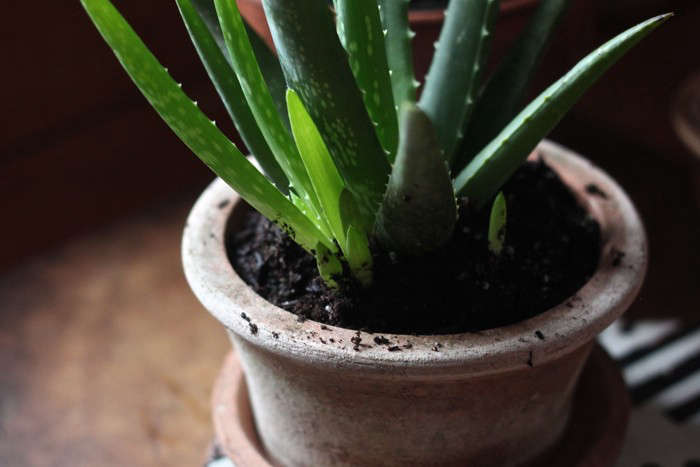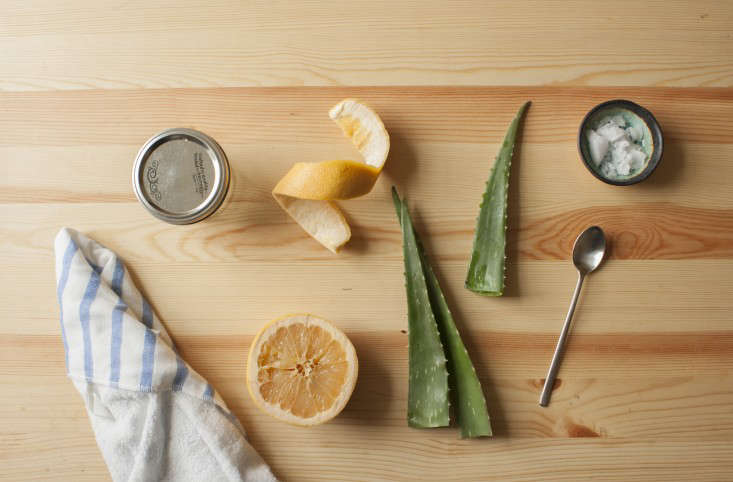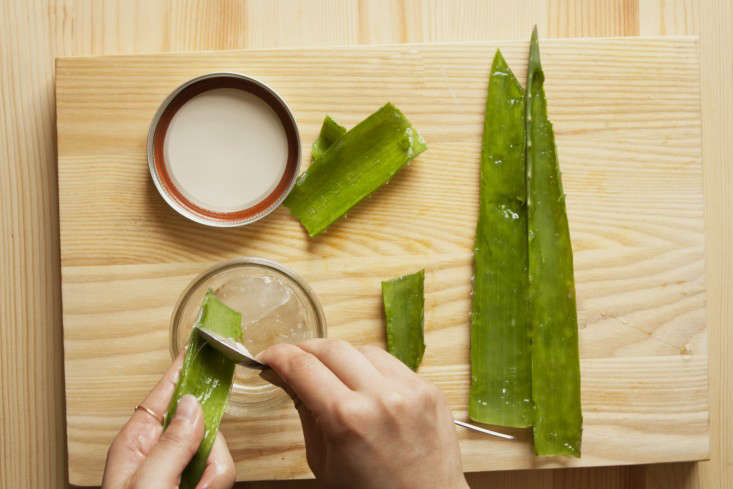Aloe vera, Aloe barbadensis: “First Aid in a Pot”
Temperatures are dropping here in the Northeast and soon the urge to grow things will have to be satisfied by house plants. If you are looking for eye-catching indoor specimens or if you are lucky enough to live in year-round warmth and want a new addition to your rock garden or xeriscape, you would do well to turn your attention to Aloe vera.

Aloe vera is a member of a group of plants known as Aloes. They comprise a genus of approximately 300 to 400 species of evergreen, mostly succulent, plants. Many resemble spiky, rather unfriendly, outer space creatures. They run the gamut from tiny specimens creeping on the ground, to grass-like herbs, to husky trees that top out at 60 feet.

The most famous plant in this genus is Aloe vera. Valued for its medicinal and cosmetic properties, this plant has been cultivated through the ages, for so long that no one is really sure where it originally came from (although the Sudan is one likely guess). It is somewhat on the small side, reaching a maximum of about 3 feet in height. Its leaves are plump and look like tentacles growing up and out from a ground-hugging rosette.

You’ve probably seen Aloe vera on kitchen windowsills where it serves as a kind of living first aid kit… ready at a moment’s notice to give up the healing gel inside its leaves to sooth a burn or minor cut.

Cheat Sheet
- Good drainage is critical to the survival of Aloe vera so it is best planted with other succulents, cacti or other plants that hate wet feet such as lavender or sedum.
- Aloe vera thrives in containers as long as the soil is a commercial cactus mix or conventional potting soil with added sand, granite grit or perlite.
- Aloes have shallow spreading roots so it is best to choose a wider, rather than deeper, container when you are potting up.

Above: Photograph by Justine Hand.
Keep It Alive
- Aloes like bright sunlight so grow outdoors in full or partial sun in zones 10-11. If your winter temperatures drop below 50F degrees your Aloe vera must be moved inside to a green house or sunny spot in your home.
- In winter Aloe vera goes dormant so let the plant completely dry out before watering lightly. During summer the plant should also be allowed to dry out but then it should be soaked thoroughly each time you water.
- Aloe vera is largely pest and disease free and requires no pruning.

Aloe vera can be grown from seed but the easiest way to propagate it is from the little offshoots or “pups” the mature plant produces at its base. Use a sharp knife to cut the baby plant off the parent. The pup is ready to plant when the knife wound has formed a callus. In the right conditions, usually in bright light outside, Aloe vera will bloom. The sculptural yellow to reddish orange flower appears on a single leafless stalk 2 to 3 feet tall.

There are much more dramatic Aloes to grow as ornamentals, but Aloe vera is outstanding as a plant that has been useful to man since ancient times. It appeared in a Stone Age cave drawing in South Africa, was mentioned in an Egyptian scroll from the 16th Century B.C., is found in the Bible and may have been used to embalm the body of Christ. Alexander the Great captured an island famous for growing Aloe vera in order to have an abundant supply to treat the wounds of his soldiers.

Cleopatra is said to have included Aloe vera in her beauty routine. Today it is widely commercially grown for the health and cosmetic industries and touted as effective in treating everything from dry skin to bad breath to heartburn.
See more about aloe in DIY: How to Care for Aloe Vera, the Plant of Immortality and DIY: A Soothing Sunburn Cure (with a Secret Ingredient).
Finally, get more ideas on how to successfully plant, grow, and care for aloe with our Aloe: A Field Guide.
Finally, get more ideas on how to plant, grow, and care for various houseplants with our Houseplants: A Field Guide.
Interested in other succulents or cacti? Get more ideas on how to plant, grow, and care for various succulents and cacti with our Succulents & Cacti: A Field Guide.









Have a Question or Comment About This Post?
Join the conversation